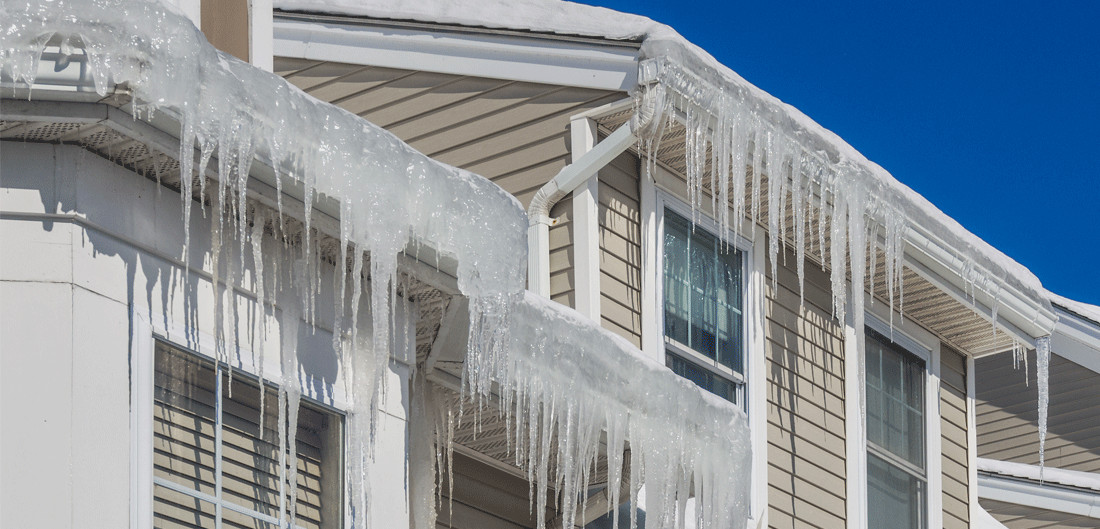
Understanding and Preventing Ice Dams
As winter sets in, the charm of snow-covered roofs can quickly give way to a significant concern for commercial building owners: ice dams. These frozen formations may seem harmless at first glance, but they can lead to costly damages, energy inefficiencies, and potential safety hazards. In this blog post, we’ll delve into what ice dams are, the risks they pose to commercial buildings, and essential preventive measures to safeguard your property.
What are Ice Dams?
Ice dams are ridge-like formations of ice that accumulate at the edges of roofs, typically along the eaves. They form when snow on the upper part of the roof melts due to heat escaping from the building’s interior or inadequate insulation. The melted snow then runs down the roof until it reaches the colder eaves, where it refreezes, creating a barrier of ice. As this process continues, the ice dam can grow, blocking proper drainage and causing water to back up beneath shingles and leak into the building.
Risks and Consequences
Ice dams can wreak havoc on commercial buildings in several ways:
- Water Damage: The trapped water behind the ice dam can seep into the roofing structure, insulation, and eventually leak into the building. This can lead to stains, weakened ceilings, and even mold growth.
- Roof Damage: As the ice dams expand and contract due to temperature fluctuations, they can lift and damage shingles, leading to premature roof deterioration.
- Gutter and Downspout Damage: The weight of the ice dams can damage gutters and downspouts, causing them to detach from the building and further impeding proper drainage.
- Energy Inefficiency: Ice dams indicate heat loss from the building’s interior, which can result in increased heating costs during winter.
- Safety Hazards: Falling ice and icicles from ice dams can pose a threat to pedestrians and vehicles below.
Preventive Measures
- Insulation and Ventilation: Proper insulation and ventilation are key to preventing ice dams. Ensure your building’s attic is well-insulated and adequately ventilated to maintain a consistent roof temperature.
- Sealing Air Leaks: Identify and seal any gaps, cracks, or air leaks in the roof, walls, and ceilings. This prevents warm air from escaping and heating the roof.
- Roof Raking: Use a roof rake to remove snow from the lower sections of the roof, especially around the eaves. This reduces the chances of ice dam formation.
- Gutter Maintenance: Keep gutters and downspouts clean and free from debris, allowing melted snow to drain properly.
- Heat Cable Installation: In particularly vulnerable areas, consider installing heat cables along the eaves to melt ice and create channels for water to escape.
- Professional Inspection: Regularly schedule inspections with a commercial building inspection professional who can assess your roof’s condition and identify potential issues before they escalate.
Conclusion
As a responsible commercial building owner, being proactive about ice dam prevention can save you from extensive repair costs, energy inefficiencies, and safety concerns. By understanding the formation of ice dams, their risks, and implementing preventive measures, you can ensure that your property remains well-protected and prepared for the winter months ahead. If you require assistance in assessing your building’s vulnerability to ice dams, our experienced commercial building inspection team is here to help.
